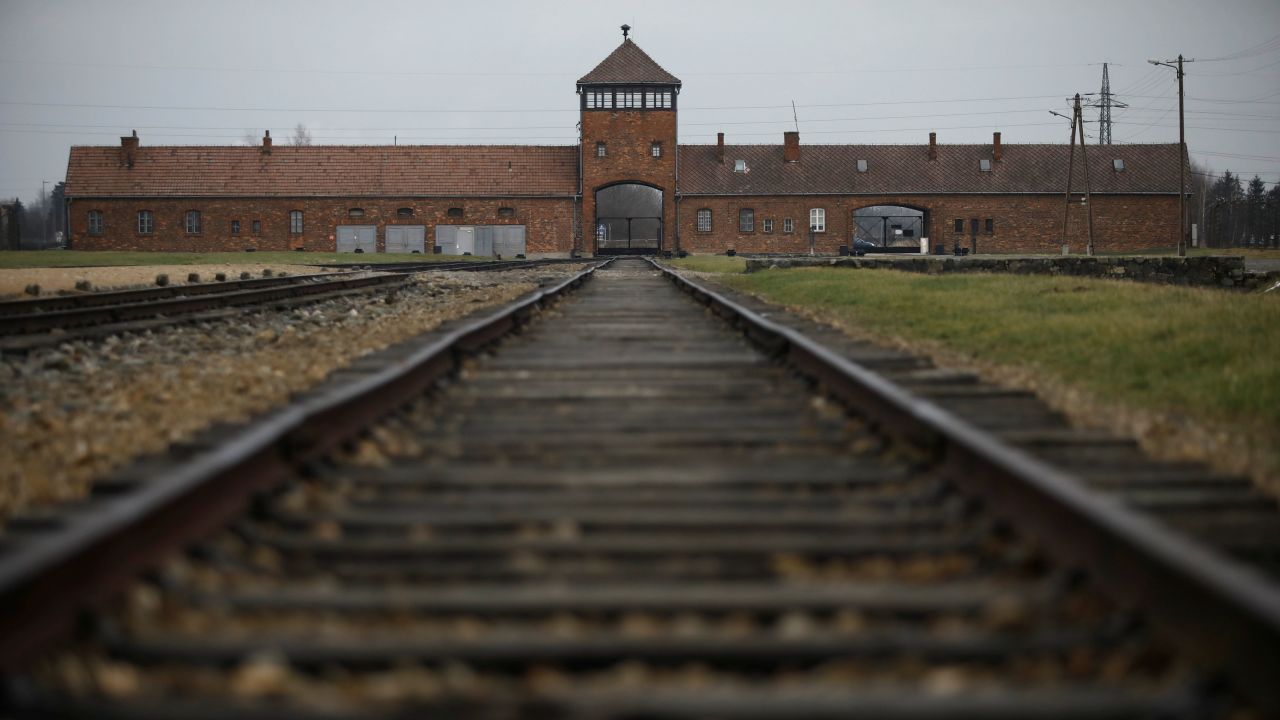CNN
—
This week, we traveled to Poland to help commemorate the 80th anniversary of the start of the Warsaw Ghetto Uprising, when Jews revolted against their Nazi oppressors, who had forced them to live behind barbed wire walls in horrific conditions.
We also participated in the March of the Living, an annual two-mile walk from the Auschwitz concentration camp to Birkenau, where Nazis brought Jews from all over Europe to be starved, humiliated, terrorized and murdered in gas chambers.
For both of us, this trip was intensely personal.
I thought I knew what was in store for me visiting Auschwitz-Birkenau. I had been there some years back when I was working on a report for CNN about my family history – I’m the child of Holocaust survivors. I had heard my parents, both Polish Jews, speak of their painful experiences surviving the war. But I never knew my grandparents because all four of them were rounded up by the Nazis and killed during the Holocaust.
But this time was different. As our expert guide showed us the Auschwitz gas chamber, I mentioned that I had learned a few years earlier that my dad’s parents were killed at Auschwitz. Our guide said that Polish Jews were largely killed in the very gas chamber we were standing in. He pointed out the gas chamber and the adjacent crematorium, where their bodies were burned and the remains then discarded in a pit. It was the first time I realized that I was standing right where my paternal grandparents had been murdered. Tears came to my eyes.
My father had told me much about my grandparents, Isaac and Chaya Blitzer. They were very religious and truly wonderful people who had lived and raised their six children nearby. I wish I had known them.
I never knew my mother’s parents, Wolf and Chaya Zylberfuden, either. My mom always spoke so lovingly of them. They were rounded up elsewhere in Poland and sent to a labor camp, where they were forced to make ammunition for Nazi soldiers. The conditions there were awful, and they soon died of typhoid fever, which was spreading around the area.
I proudly carry the names of my two grandfathers – Wolf Isaac Blitzer.
And now a new generation is carrying on the lessons of the Holocaust. At the annual March of the Living, thousands of people – Jews and non-Jews, young and old – come from all around the world to the Auschwitz-Birkenau death camp to honor and remember those who were killed by the Nazis and their collaborators. They also come to learn and then to educate others about the horrors of the Holocaust.
On this visit, I learned more and deepened my understanding of what my grandparents, parents and their siblings endured during the Holocaust. And as I did, I kept thinking about how important it is for all of us to educate ourselves about this horrible history to make sure we never forget. It is especially vital today in light of increasing antisemitism and Holocaust denialism. As the child of Holocaust survivors, it is hard to comprehend that there are truly evil people out there spreading lies that none of this ever happened.
That’s why I was so moved by what I saw during our visit to Auschwitz-Birkenau.
I had never been to Auschwitz before. I was never actually sure that I wanted to visit this place that represented the depths of hell for the 1.1 million people murdered by the Nazis there, including my own great-grandparents.
I am now so glad that I went.
Since I was a little girl, I have heard about the horrors of the Nazi atrocities, not just from the history books but also from my own grandfather Frank Weinman, who along with my grandmother Teri Vidor Weinman, were among the few to escape.
They miraculously got to America in October 1941, thanks to Frank’s brother Charles, who was living in Chicago and had convinced his boss to put up the exorbitant sums of money the America government then required for Jewish refugees like my grandparents to get US visas to flee Nazi persecution.
Grandma Teri and her family were Hungarian Jews, and her parents, Rudolph and Matilda Vidor, along with her sister Magda, were safe from Hitler’s wrath until 1944, when he invaded Hungary.
Before visiting Auschwitz, I knew that they had been killed there.
But having our expert guide tell my brother David and me exactly where and how was numbing.
We saw a cattle car exactly like the one they were shoved into with little to no water or food, traveling for days from Hungary to Poland’s camps. We stood on the train tracks the Germans built to bring them into Auschwitz-Birkenau.

We saw what was left of what was likely the gas chamber where they were murdered and informed that because of their ages – both were in their 50s and not considered strong enough for hard labor – they probably were killed within a hour of arriving.
It was a lot to take in, and it will take a while for my brother and me to process it all.
But for both of us, our immediate takeaway was one of defiance – that our mere existence is proof that Hitler did not succeed in his quest to annihilate our family just because we are Jews.
For years, not knowing exactly when or how her parents were killed, my Grandma Teri chose April 19, the day of the start of the Warsaw Ghetto Uprising, to say Kaddish, the Jewish prayer recited on the anniversary of a loved one’s death.
This week, my brother and I got to say Kaddish just steps from where they died.
May their memory be a blessing.